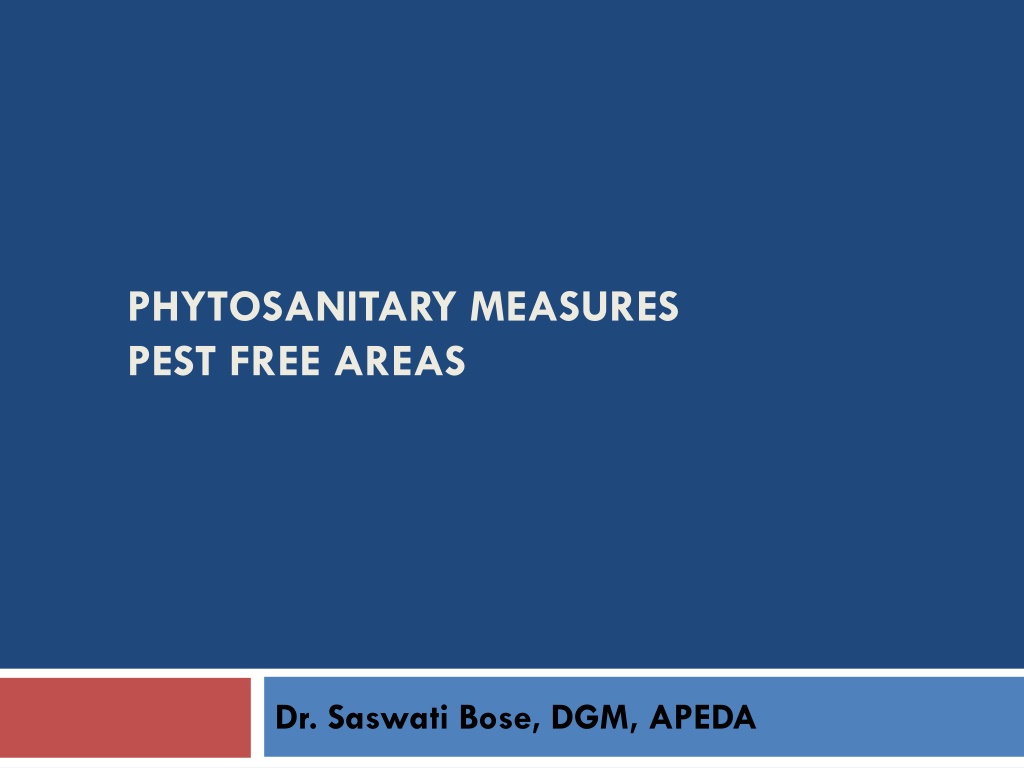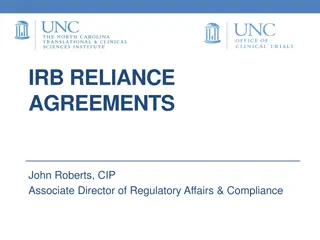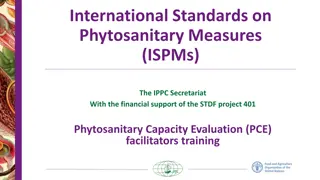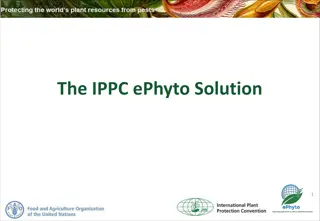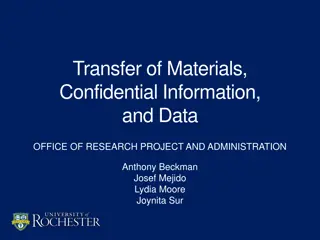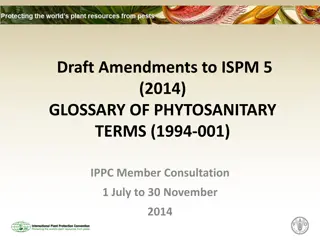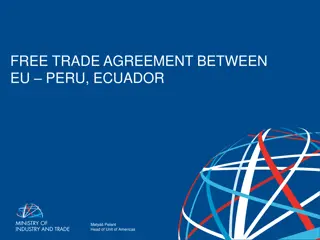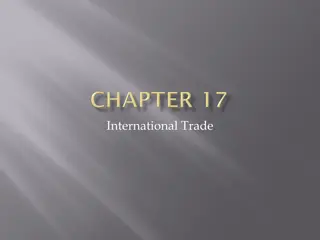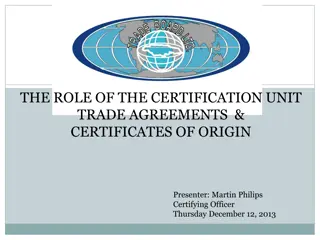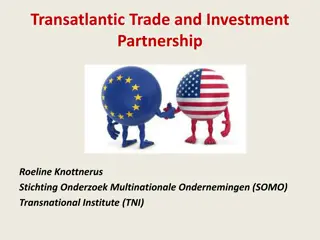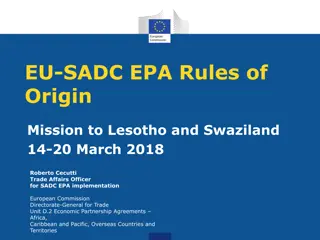International Trade Agreements on Sanitary and Phytosanitary Measures
Phytosanitary measures, pest-free areas, and agreements such as the SPS and TBT aim to protect health and prevent trade barriers in international trade. The SPS Agreement focuses on sanitary measures based on risk assessment, while the TBT Agreement aims to prevent unjustified technical barriers to trade.
Download Presentation

Please find below an Image/Link to download the presentation.
The content on the website is provided AS IS for your information and personal use only. It may not be sold, licensed, or shared on other websites without obtaining consent from the author. Download presentation by click this link. If you encounter any issues during the download, it is possible that the publisher has removed the file from their server.
E N D
Presentation Transcript
PHYTOSANITARY MEASURES PEST FREE AREAS Dr. Saswati Bose, DGM, APEDA
Phytosanitary Procedures for Market Access Import regulation Export certification Surveillance Pest risk analysis Pest eradication Pest Free Areas
World Trade Organisation Two binding Agreements SPS Agreement TBT Agreement
SPS Agreement Recognition of right of governments to protect health of people from hazards which may be introduced by imported foods by imposing sanitary measures Such sanitary measures must based on risk assessment to prevent disguised trade protection measures
SPS Agreement Sanitary measures must be Non-discriminatory Not more restrictive than necessary Based on sufficient scientific evidence Governments should base sanitary measures on international standards Codex standards are recognized as consistent with SPS provisions
SPS Agreement An annex to the Sanitary and Phytosanitary Measures Agreement names the following sources for international standards: The FAO/WHO Codex Alimentarius Commission (CODEX) : for food The International Office of Epizootics (OIE): for animal health The FAO s Secretariat of the International Plant Protection Convention (IPPC): for plant health.
TBT Agreement Agreement on Technical Barriers to Trade The objective of the TBT Agreement is to prevent the use of national or regional technical requirements, or standards in general, as unjustified technical barriers to trade.
TBT Agreement Provides that all technical standards and regulations must have a legitimate purpose and that the impact or cost of implementing the standard must be proportional to the purpose of the standard. If there are two or more ways of achieving the same objective, the least trade-restrictive alternative should be followed.
Risk Analysis Risk Communi- cation Risk Manage- ment Risk Assessment
Phytosanitary import regulatory system Phytosanitary measures in exporting countries Designation of pest free areas and areas of low pest prevalence Special imports Non-compliance and emergency actions Recognition of equivalency Pest reporting
Phytosanitary import regulatory system Lists of regulated pests Phyto. measures Pest surveillance Pest status PRA
Pest Free Areas ISPMs 4, 10 and 22: Describe the requirements for the establishment and use of pest free areas (PFAs), pest free places of production and pest free production sites (PFPP and PFPS), areas of low pest prevalence (ALPP) as a risk management option for phytosanitary certification of plants and plant products and other regulated articles exported from the PFAs, PFPPs, PFPSs and ALPPs or to support the scientific justification for phytosanitary measures taken by an importing country.
Pest Free Areas ISPMs 29 - Recognition of pest free areas and areas of low pest prevalence This standard provides guidance and describes a procedure for the bilateral recognition of pest free areas and areas of low pest prevalence. This standard does not include specified timelines for the recognition procedure. This standard considerations regarding pest free places of production and pest free production sites also provides some
Establishing and Maintaining Pest Free Areas Understanding the principal requirements for pest free areas, pest free places of production, pest free production sites and areas of low pest prevalence
Pest free area Definition: An area in which a specific pest is absent as demonstrated by scientific evidence and in which, where appropriate, this condition is being officially maintained [ISPM 2]
WHEN TO ESTABLISH PEST FREE AREAS To improve the phytosanitary negotiations with importing countries To export specific fruit and vegetable commodities to potentially high-value external markets NPPOs Could declare PFAs to protect naturally occurring areas Where a harmful organism is absent or of limited distribution but could establish due to the climatic conditions, availability of host plants, and other favourable conditions.
HOW IDENTIFICATION OF CROP(S) AND PEST TO BE REGULATED UNDER A PEST FREE AREA DETERMINATION OF THE TARGETED AREA SURVEILLANCE ACTIVITIES PRIOR TO ESTABLISHMENT ECONOMIC FEASIBILITY PEST STATUS AND INTERVENTION OPTIONS
PEST FREE AREA Stakeholders Technical Expertise Communication and Awareness Infrastructure and logistics Planning and Implementation Budgeting & Funding
ESTABLISHMENT OF PEST FREE AREA Area of low pest prevalence Surveillance plan Specific survey Sampling Procedure Sample management and diagnostic services Suppression measures Buffer Zones Quarantine measures
VERIFICATION OF PEST ABSENCE FOR ESTABLISHING PFAs DECLARATION AND RECOGNITION OF PFAs MAINTENANCE OF PFAs Role of the NPPO (exporting country)
